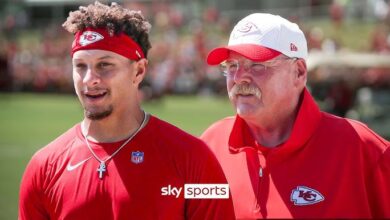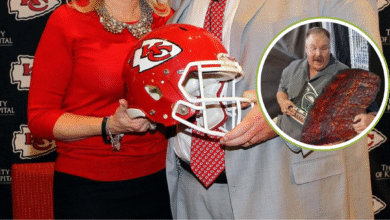Brian May’s 1976 Walkout: The Explosive Queen Feud That Nearly Ended the Band
OPINION: This article may contain commentary which reflects the author's opinion.
In the annals of rock history, few bands have achieved the meteoric rise and enduring legacy of Queen. By 1976, the British quartet—Freddie Mercury, Brian May, Roger Taylor, and John Deacon—had solidified their reputation as a powerhouse, with albums like A Night at the Opera and hits like “Bohemian Rhapsody” propelling them to global stardom. Yet, beneath the glitz and harmony, tensions simmered. One such moment, buried in band lore but rarely discussed in detail, was Brian May’s dramatic walkout on Roger Taylor during a free concert at Hyde Park in 1976. This dispute, sparked by a clash of egos and creative differences, nearly shattered Queen’s unity, revealing the fragility of their bond at the height of their early success.
The Hyde Park Concert: A Triumph Tinged with Tension
On September 18, 1976, Queen took the stage in London’s Hyde Park for a free concert that would become legendary. Organized as a thank-you to their fans, the event drew an estimated 150,000 to 200,000 attendees, one of the largest crowds the park had ever seen. The band was riding high, fresh off the success of A Night at the Opera and preparing material for their next album, A Day at the Races. The Hyde Park show was a chance to cement their status as Britain’s premier rock act, with a setlist showcasing their theatrical flair and musical virtuosity.
The performance itself was a triumph. Freddie Mercury, ever the charismatic showman, commanded the stage with his operatic vocals and magnetic presence. Brian May’s intricate guitar riffs soared, John Deacon’s understated basslines anchored the rhythm, and Roger Taylor’s thunderous drumming drove the energy. The crowd roared through classics like “Killer Queen,” “Somebody to Love,” and a rousing encore of “God Save the Queen.” On the surface, it was a flawless display of Queen’s unity and ambition. But behind the scenes, cracks were forming, and the clash between May and Taylor would soon erupt.
The Spark: Creative Control and Clashing Personalities
The Hyde Park concert was a logistical and creative gamble, with the band investing heavily in production to ensure a spectacle worthy of their reputation. However, the pressure of delivering a free show on such a grand scale amplified existing tensions within the band. Brian May, the thoughtful and meticulous guitarist, was known for his perfectionism and deep investment in Queen’s artistic direction. Roger Taylor, the flamboyant drummer with a penchant for rock ‘n’ roll excess, often brought a more spontaneous, visceral energy to the group. While their differences had fueled Queen’s eclectic sound, they also sowed seeds of conflict.
According to band insiders and later interviews, the dispute at Hyde Park centered on a disagreement over the setlist and stage production. May, who had a strong vision for the band’s live performances, reportedly felt that Taylor was pushing for a looser, less structured approach that clashed with the guitarist’s carefully crafted arrangements. Taylor, meanwhile, was frustrated by what he perceived as May’s overbearing control, believing it stifled the band’s raw energy. The exact details of their argument remain murky, as both May and Taylor have downplayed the incident in later years, but eyewitness accounts from crew members describe a heated exchange backstage, with raised voices and palpable anger.
The Walkout: A Moment of Fracture
As tensions boiled over, Brian May reached a breaking point. In a rare moment of public frustration, he stormed off, leaving Taylor and the rest of the band stunned. For a group that prided itself on professionalism and camaraderie, May’s walkout was a shocking breach of their unspoken code. Freddie Mercury, ever the mediator, reportedly stepped in to defuse the situation, while John Deacon, the quiet bassist, stayed out of the fray. The concert went on without further disruption, but the incident left a lingering shadow over the band’s dynamic.
The Hyde Park walkout was more than a momentary spat; it exposed deeper fault lines within Queen. At the time, the band was navigating the pressures of fame, grueling schedules, and the challenge of balancing individual egos within a collective vision. May, who often grappled with self-doubt and the weight of his role, felt the strain of holding the band’s artistic integrity together. Taylor, with his rock-star swagger, chafed at any constraints on his creative input. The clash at Hyde Park was a microcosm of these struggles, a warning that even a band as tight-knit as Queen could fracture under pressure.
The Aftermath: Healing and Resilience
In the immediate aftermath, Queen closed ranks, determined to move forward. Freddie Mercury’s charisma and diplomatic skills played a crucial role in smoothing over the conflict, while the band’s shared commitment to their music kept them from imploding. By the time they entered the studio to record A Day at the Races, May and Taylor had reconciled, channeling their energies into tracks like “Tie Your Mother Down” and “Somebody to Love.” The Hyde Park incident was buried, rarely mentioned in interviews and overshadowed by the band’s subsequent triumphs.
Yet the walkout left an indelible mark on Queen’s history. It served as a reminder of the delicate balance required to sustain a band of such diverse talents and strong personalities. Over the years, May and Taylor have both acknowledged the challenges of working together, with May describing their relationship as “like brothers who fight but always come back together.” The Hyde Park dispute, though a low point, ultimately strengthened their resolve to prioritize the band’s legacy over individual grievances.
A Legacy Forged in Fire
The Hyde Park concert of 1976 remains a landmark in Queen’s career, a testament to their ambition and connection with their audience. But the story of Brian May’s walkout on Roger Taylor adds a layer of complexity to the mythos, revealing the human struggles behind the band’s larger-than-life image. It’s a reminder that even at their peak, Queen was not immune to the pressures that have broken lesser bands.
Today, Queen’s music continues to resonate, with May and Taylor carrying the torch alongside Adam Lambert after Mercury’s tragic death in 1991. The Hyde Park incident, though a footnote in their storied career, underscores the resilience that defined Queen. It was a moment when the band teetered on the edge of fracture, only to emerge stronger, their unity forged in the fire of conflict. For fans, it’s a poignant chapter in the saga of a band that dared to dream big, fought hard, and ultimately triumphed.



